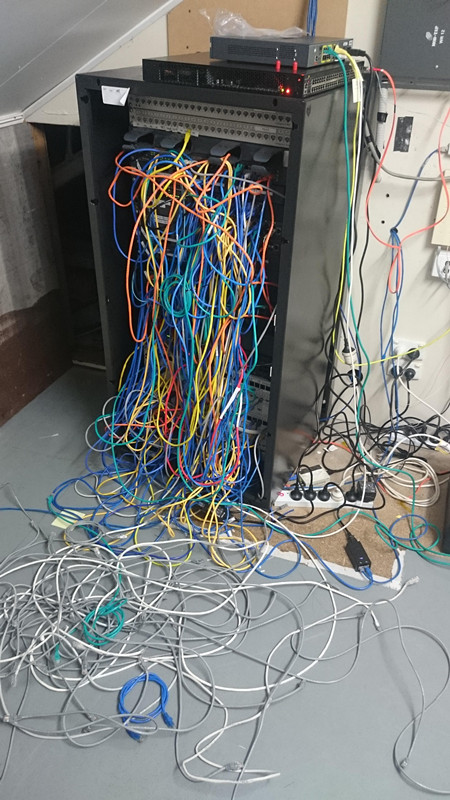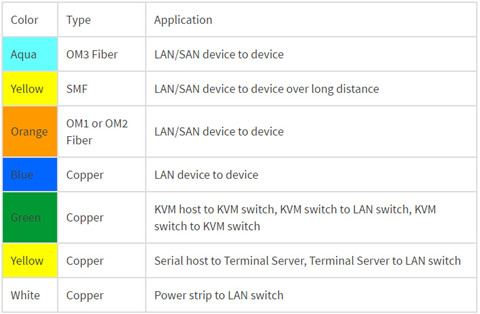Network designers may encounter a problem when they are about to organize the spaghetti-hell cables in the rack (seen in the below image). They don't know where to start. So how do you organize the cables in your racks? What method do you use for the re-installation? Do you use any tracking software or physically label the cables? How to label the cables? In fact, it is essential for data center infrastructure to well organize all the cables in the racks. It not only helps users install and route cables in an easier and more accurate way, but reduce the time required for further maintenance. Therefore, this article will provide two identify methods to help you out.

Label Each Cable and Panel
Labeling system can clearly identify all components of the structured cabling system including racks, cables, panels and outlets. If you don't label your cables, you're only making more work for yourself. Every cable should have a label on both ends, even short runs and patch cables. Only in this way, you will know where each cable goes when you unplug a few patch cables for a switch, and reset them back to their default locations.
There are two methods that you can use to label your cables with a generic labeler. You can run the label along the cable, so that it can be read easily, or you can wrap it around the cable so that it meets itself and looks like a tag. The former is easier to read, the latter is either harder to read or uses twice as much label since you type the word twice to make sure it's read. Long labels on mine get the "along the cable" treatment, and shorter ones get the tag.
Use Color Coding for Quick Visual Identification
Color coding can be a solution to the problem of wire identification, making locating cables from a distance easier. Users should use a specific color cable for a specific purpose so that they can easily and rapidly trace cables back. And one thing you are supposed to bear in mind is that never use colors randomly. Make sure each color has a purpose and stay with it. That will make it easier to follow cable runs and troubleshoot issues. And it also makes for a better-looking data center. The below image shows the example color scheme for patch cables.

Note: the color scheme depends on the cable manufacturer and your color coding plan. If you use colors to identify cable functions or connections, be sure to build in redundancy to accommodate individuals with color blindness or color vision deficiency.
Hints About Color-Coding and Labeling
- Visually identifying cables will save you time tracking them down.
- Use color and labels to identify and organize: cables’ role and function or connection type, dual-power feeds for redundant power sources.
- Use secure labels that can be seen but difficult to remove.
- Maintain a spreadsheet that identifies the cables and colors, where cables come from and go, and configurations.
Summary
There is no need to mention the importance of cable identification. Once you begin to identify the cables in your racks (whether to use color coding or labeling), please hold on to it. Or you'll confuse yourself and those who work for you. In all, use of the color coding or labels is the best practice to identify cables in a rack. FS.COM offers a full range of fiber optic cables such as single-mode fiber, multimode fiber (OM1/OM2/OM3/OM4), simplex and duxplex cables, Ethernet cables (cat5e/6/7), etc. Besides, Cable Wire Markers and Cable labels & Printers are also offered. If you have any requirement, please send your request to us.

No comments:
Post a Comment